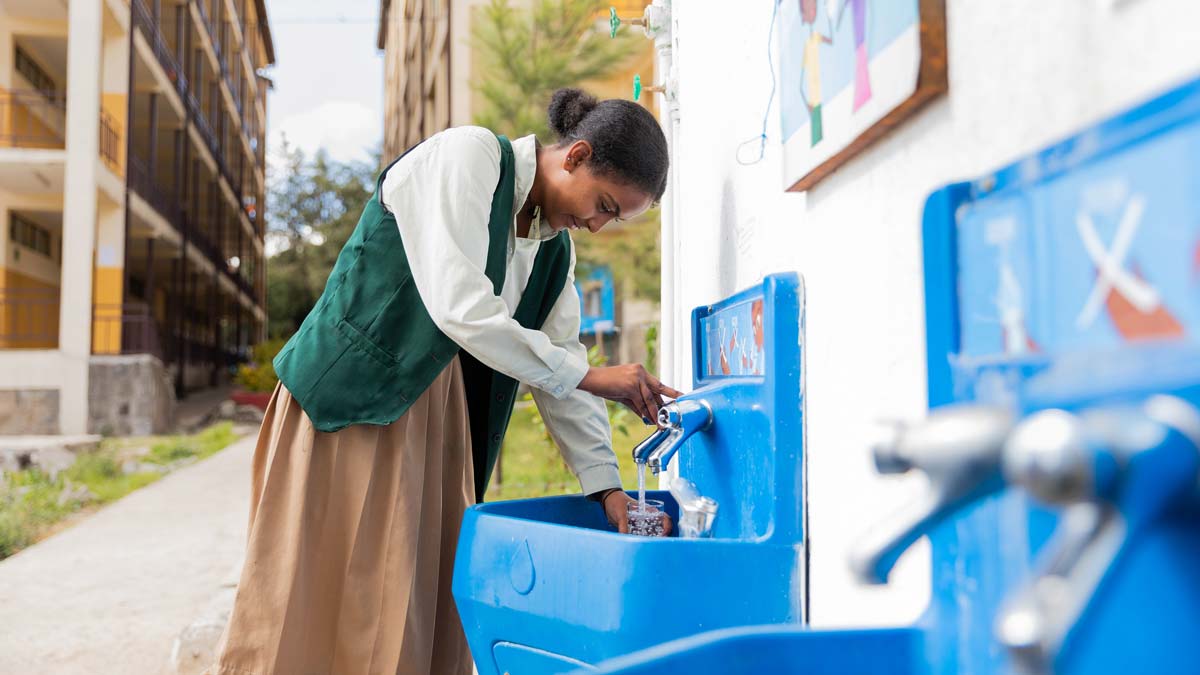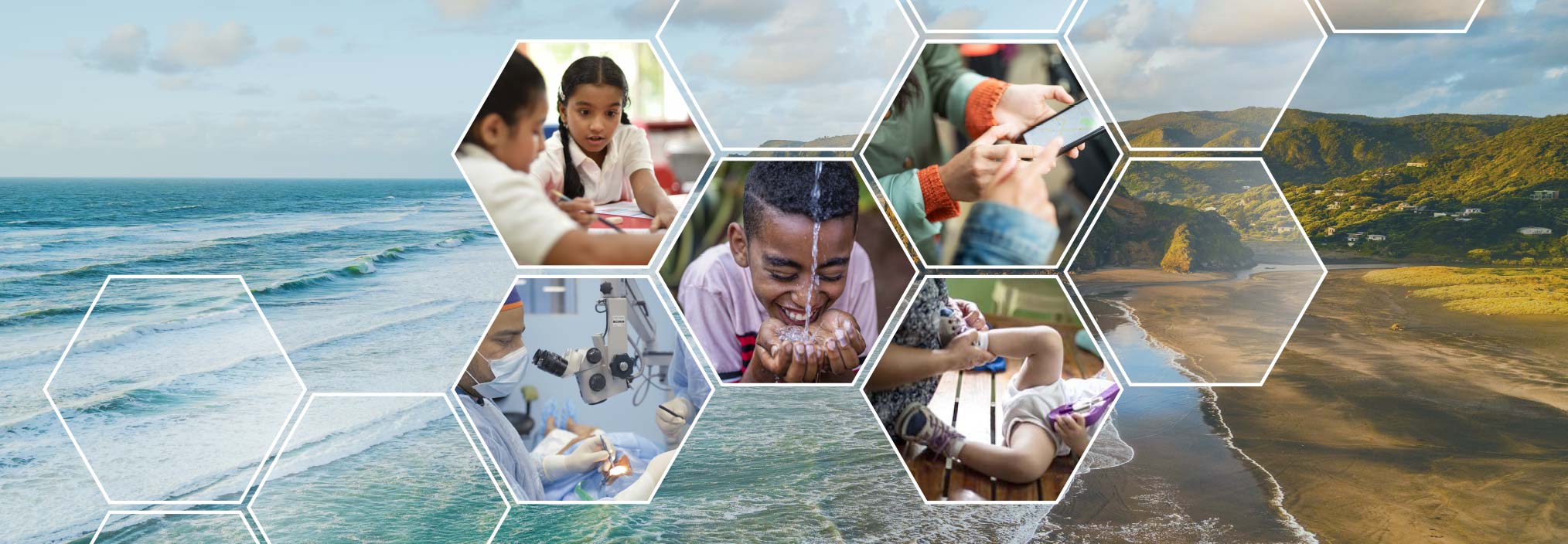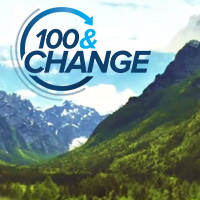Chris Cardona, Managing Director, Discovery, Exploration, and Programs explores how recent global changes influenced leading proposals for the $100 million grant and shares their inclusion in the Bold Solutions Network.
We knew things would change, but not this much.
When the MacArthur Foundation and Lever for Change launched the third round of 100&Change in May 2024, we expected that the 18 months until we named the $100 million Award Recipient would include a fair share of social, economic, and political shifts. The trends have been clear: the world is more polarized, economic inequality continues to grow, and climate change is getting more extreme.
The reaction was equally clear: over the course of 2024, every incumbent party in wealthy democracies lost vote share, as people rejected the status quo of whatever party was in power. And the resulting changes in U.S. policy, particularly on the global stage, have been stark. The civil sector has been searching to find its footing and voice as foreign aid and government funding have been slashed.
The core of 100&Change has always been boldness of vision combined with rigor of selection and implementation.
Amid this uncertainty, it may seem like a $100 million competition for just one grant is questionable. Is that enough money for the scale of the problems we hope to address? Is one grant enough for the many organizations and communities in need? And yet the core of 100&Change has always been boldness of vision combined with rigor of selection and implementation.
We launched this competition in 2017 amid a changing political landscape and held the second during a global pandemic in 2021. In this third round, our open call revealed a set of applicants that are truly inspiring in their breadth, depth, and ambition. Through multiple rounds of evaluation by fellow applicants and experts, a group of top proposals emerged and we announced the five Finalists this spring.
Elevating More Bold Solutions
As we celebrate the boldness of the Finalists’ ideas—we also want to recognize the many teams that put forth excellent proposals in this important moment. We are excited to announce the inclusion of an additional 48 projects into the Bold Solutions Network, Lever for Change’s curated list of high-impact projects. Lever for Change makes the list available to donors and provides teams tailored technical assistance beyond the competition timeframe.
We believe that more ideas need fueling, and we are eager to connect donors to these opportunities.
More than 350 teams are now listed on the Bold Solutions Network from across Lever for Change’s more than 15 competitions. Forty percent of them garnered additional funding between 2019 and 2024. This visibility is part of MacArthur and Lever for Change’s commitment to ensure that the benefits of 100&Change accrue beyond the Finalists and Award Recipient. We believe that more ideas need fueling, and we are eager to connect donors to these opportunities. What characteristics do these new additions have? We already knew there are notably more partnerships proposed in this round of the competition. What else did the top proposals have in common that made them compelling to our evaluators? A few patterns are notable.
U.S. and Global South Partners Collaborating for Interventions
Of the top proposals, 88 percent focus on work outside the United States.
As in prior rounds of the competition, a plurality of projects are based in North America: 34 percent of valid applications. And among the top proposals, 71 percent have the lead organization’s headquarters in the U.S. But most of them are proposing work outside the country where they are based.
This shows the continued relevance of the U.S.’s role as a global actor. Organizations based here are proposing powerful solutions that help people all across the planet. This is a compelling vision of American leadership.

Splash International, headquartered in in Seattle, Washington, works with local partners across eight countries to provide clean water access at schools. Credit: Mekbib Tadesse/Splash International
As most of these proposals are partnerships, U.S. organizations are working with global counterparts, sharing knowledge, learning from each other, and building capacity that can endure across national boundaries.
And we also see leadership from the Global South: one in six of the top proposals has its lead organization based there.
Health Interventions That Promise to Eradicate Causes of Human Suffering
The Seva Foundation proposes to provide sustainable eyecare services to 17 million people in Guatemala and 6 million in Paraguay, building on its existing efforts. This would address a gap through which more than 1 billion people worldwide live with avoidable blindness or vision loss due to lack of access to eyecare.
MiracleFeet proposes to accelerate treatment of clubfoot in the 10 highest-need countries, representing 50 percent of the total global need, embedding newborn screening, referral, treatment, and funding within national healthcare systems.
The Piramal Swasthya Management and Research Institute proposes to address tuberculosis (TB) among Indigenous peoples in India, through contextualized interventions across 250 tribes. India, which has 27 percent of the world’s TB cases, has committed to TB elimination and has made significant strides, however, reaching the last mile to the most marginalized tribal communities remains the final frontier.
Educational Interventions That Remove Barriers
Educate Girls proposes to work across India’s most underserved geographies to ensure every girl can access education through public schools or state open schools. Educating girls builds agency and voice, delays child marriage, improves health outcomes, and raises lifetime earnings. Yet more than 100 million girls and young women aged 6-29 are not in education, employment, or training.
Splash International addresses a similar population across eight countries in Asia and Africa, transforming public schools starting at water fountains. With clean water, toilets, and hygiene programs, it helps keep girls in school and all kids thrive.
Climate Interventions That Promise Creative Approaches to Mitigation and Adaptation
The Global YouthMappers Network, led by researchers at Arizona State University, has in the last ten years developed student-led, faculty-mentored chapters in more than 400 institutions of higher learning across more than 80 countries. This network of volunteers creates and uses open geospatial data for humanitarian and development aims. Their proposal is to leverage this existing network to map extreme heat patterns and to generate life-saving action plans based on participatory mapping activities and sharing of heat relief solutions through the network.
And There is More Where These Came From…
These are some of the broad patterns of the Bold Solutions Network. The full range of projects addresses topics like connecting services that help children thrive; advancing mental health in the U.S. heartland; preventing crime through community courts and resident-led community safety efforts; and enabling refugees to earn livelihoods through enterprise.
What they have in common goes back to the 100&Change criteria: they are impactful, evidence-based, feasible, durable, and just.
What they have in common goes back to the 100&Change criteria: they are impactful, evidence-based, feasible, durable, and just. A long history of global engagement, through education, medicine, and development, has yielded a set of relationships, networks, and mutual understanding that are not easily undone, regardless the current funding trends.
Across the three rounds of 100&Change, nearly one thousand people read and evaluated at least one proposal. The top proposals in this round are therefore a valuable reminder that what is most compelling to people of good conscience is a world where we support each other across national boundaries and find common purpose in uplifting and serving humanity in creative and impactful ways. We are grateful to the top proposal project teams, and all the applicant teams, for reminding us all of this essential fact.




